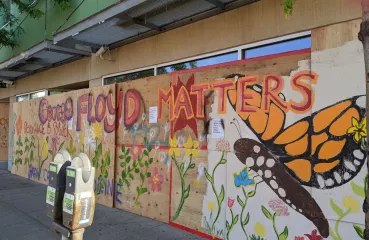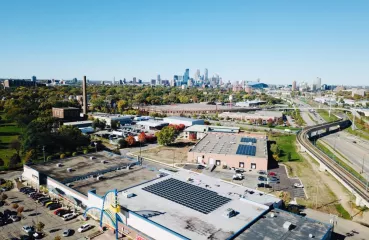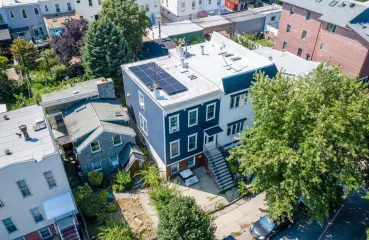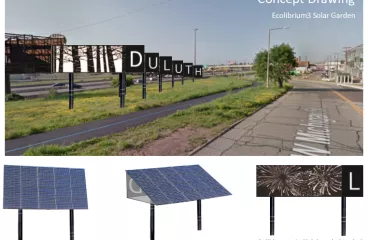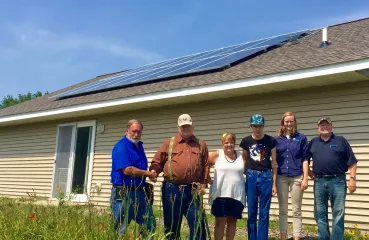A local vision
Impact is a direct marketing company headquartered on Lyndale Avenue in Minneapolis, operating nationally in marketing, social media, and order fulfillment. Between running computers, printing hardware, and other machinery, the company was spending a lot on energy to power their operation. Mark Anderson, the president of Impact, saw an opportunity to turn his facility’s roof into a resource to solve this problem by installing solar at the Impact headquarters.
A story of partnerships
Impact’s latest 285 kW solar array was a partnership between the company and the City of Minneapolis’ Green Cost Share Program. This program, with technical assistance from the Metro Clean Energy Resource Team (CERT), provides funding for businesses and multi-family residential buildings that have demonstrated a willingness and commitment to invest in cleaner, greener, and more efficient technologies. Impact was able to secure $75,000 in funding from the program to support their array project, which generates an estimated 477,700 kWh of energy for the company annually.
This most recent investment came on the heels of a similar solar project by Impact; a 416 kW community solar garden array on their rooftop, created in partnership with Greenway Solar and the Minnesota Renewable Energy Society (MRES). Receiving its ribbon cutting ceremony in Fall 2018, this project was not only Impact’s first foray into the world of renewable energy, but also a way to give back to their community, annually delivering 537,477 kWh of electricity to participating subscribers.
We asked MRES and Greenway Solar to share a little more about the solar garden's origins.
"The Minnesota Renewable Energy Society was pleased to be selected by the Public Utilities Commission at the recommendation of Xcel Energy in 2014 to help develop the best practices for subscribing and operating this low-income solar garden," shared MRES board chair Mark Weber.
Paul Krumrich with Greenway Solar continued the story: "MRES asked me to help them as they were looking for a developer for the project. I then got busy learning about the business and solar gardens and rolled up my sleeves. It was our first solar project, so it was a long learning curve. We called around to many businesses with flat roofs. Impact had a great roof and a business owner that was open to learning more, and the rest is history. Greenway Solar is now a fully-fledged electrical contractor specializing in solar and storage. We are currently helping businesses in or community recover from the civil unrest and rebuild their businesses using solar, and higher efficiency practices."
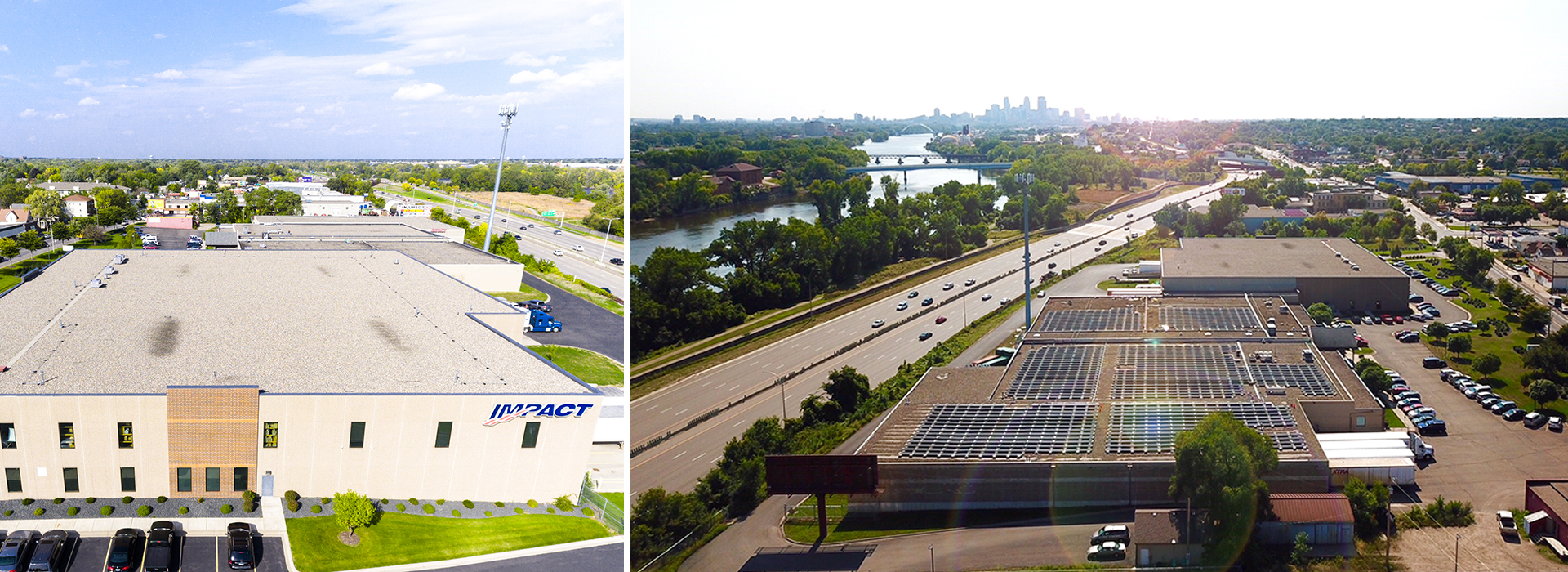
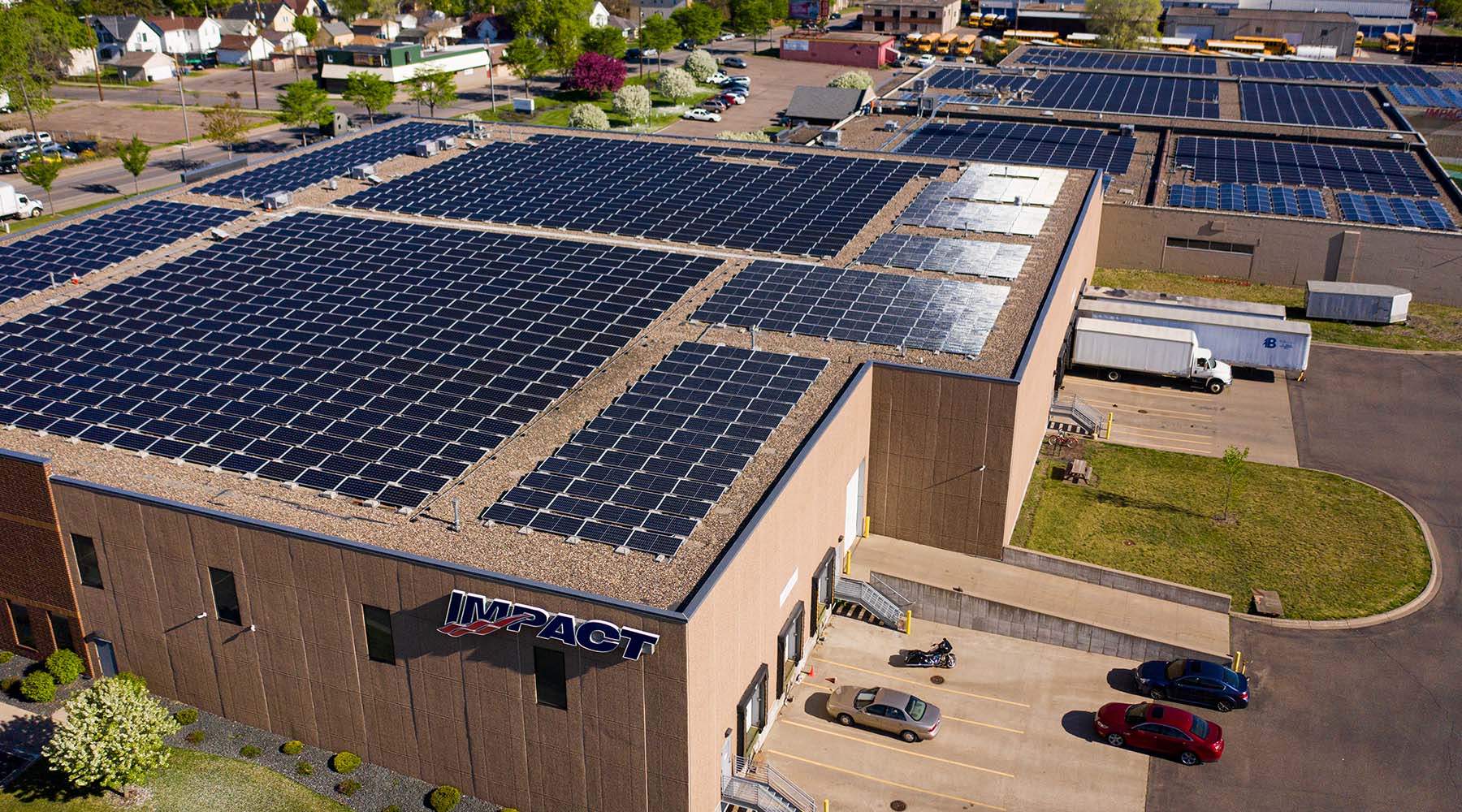
Going green, giving back
Community solar gardens allow for local residents to “buy in” and receive a share of the energy produced through their utility bill. This allows residents to utilize solar energy, even if they don’t have the capital or the space to install it themselves. In the case of the Impact community solar garden, the goal is to bring renewable energy to local low-income households, who typically have a high energy burden, meaning they pay a much greater than average percentage of their income toward electricity.
95% of the subscribers to the Impact community solar garden are low-income residents, and the remaining 5% are other residents and businesses. Of the low-income subscribers, 45% come from affordable housing communities, and the remaining 50% are split between residents in need of medical assistance, residents that are part of the free reduced cost school meals program, and others. Most of the subscribers live in North Minneapolis and South Minneapolis, and are from diverse backgrounds.
For Impact, this was an opportunity to give back. “We are always looking for ways to positively impact the community around us and hope this initiative will encourage others to follow suit,” shared Mike Anderson, Impact President. Anderson shared that the purpose of Impact is “to experience the joy of investing in others.” Installing solar on their facility is a step in keeping with that purpose. By partnering with the Minneapolis Green Cost Share Program, Impact continues its solar leadership in the business community.



